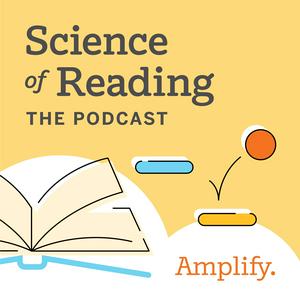S9 E13: Empowering instruction through mental models, with Young-Suk Grace Kim, Ed.D.
In this episode of Science of Reading: The Podcast, Susan Lambert is joined by Young-Suk Grace Kim, a professor at University of California at Irvine's School of Education. Dr. Kim begins by defining a theoretical model, outlining its value to teachers as it pertains to literacy instruction. She describes her own interactive dynamic literacy (IDL) model, which seeks to more fully explain reading and writing connections. Dr. Kim emphasizes how reading and writing function as a powerful and closely related system, and examines how this system interacts with developmental phases, linguistic grain size, and reading and writing difficulties, including dyslexia. After navigating the complexities of this conversation, Susan ends the episode by sharing her unique insights and takeaways from her time with Dr. Kim.Show notes:Connect with Young-Suk Grace Kim:X: @YoungSukKim19ResourcesRead: Enhancing Reading and Writing Skills through Systematically Integrated InstructionRead: Reading and Writing Relations Are Not Uniform: They Differ by the Linguistic Grain Size, Developmental Phase, and MeasurementJoin our community Facebook Group: www.facebook.com/groups/scienceofreadingConnect with Susan Lambert: www.linkedin.com/in/susan-lambert-b1512761/Want to hear more of Dr. Kim? Join us for our upcoming Spring Science of Reading Summit where she’ll be giving the keynote address on the relationship between reading, writing, and language. Save your spot: amplify.com/springsorsummitQuotes:“Lower order skills are necessary for higher order skills; that means skills and knowledge have a series of causal effects. So if you flip it the other way, any challenges or weaknesses in lower order skills, it's going to have a series of impacts on higher order skills.” —Young-Suk Grace Kim, Ed.D.“Theory is an explanation about how things work. …It's a structured framework, a mental framework, that helps us explain, and predict, and understand phenomena.” —Young-Suk Grace Kim, Ed.D.“If an educator goes to a professional development and learns about something like phoneme awareness…but you don't have a framework in which to attach it, you can sort of go down a rabbit trail on one thing instead of thinking about how it relates to the whole.” —Susan LambertEpisode timestamps*03:00 Introduction: Who is Young-Suk Grace Kim?05:00: Defining a theoretical model07:00 Origins of Young-Suk’s model08:00 Interactive Dynamic Literacy Model Overview14:00 Why interactive and why dynamic15:00 Hierarchical relations between low order skills and high order skills18:00 Breaking down “Interactive”19:00 Young-Suk’s ideal classroom20:00 Breaking down “Dynamic”21:00 Linguistic grain size22:00 Why linguistic grain size matters for teachers26:00 Why word reading and spelling are more strongly related than reading comprehension and writing composition29:00 Dynamic relationship of developmental phases30:00 Measuring reading and writing33:00 Interactive Dynamic Literacy Model summarized35:00 Understanding reading and writing difficulty, including dyslexia42:00 Dr. Kim’s Final Thoughts44:00 Susan’s takeaways from the conversation*Timestamps are approximate, rounded to nearest minute

